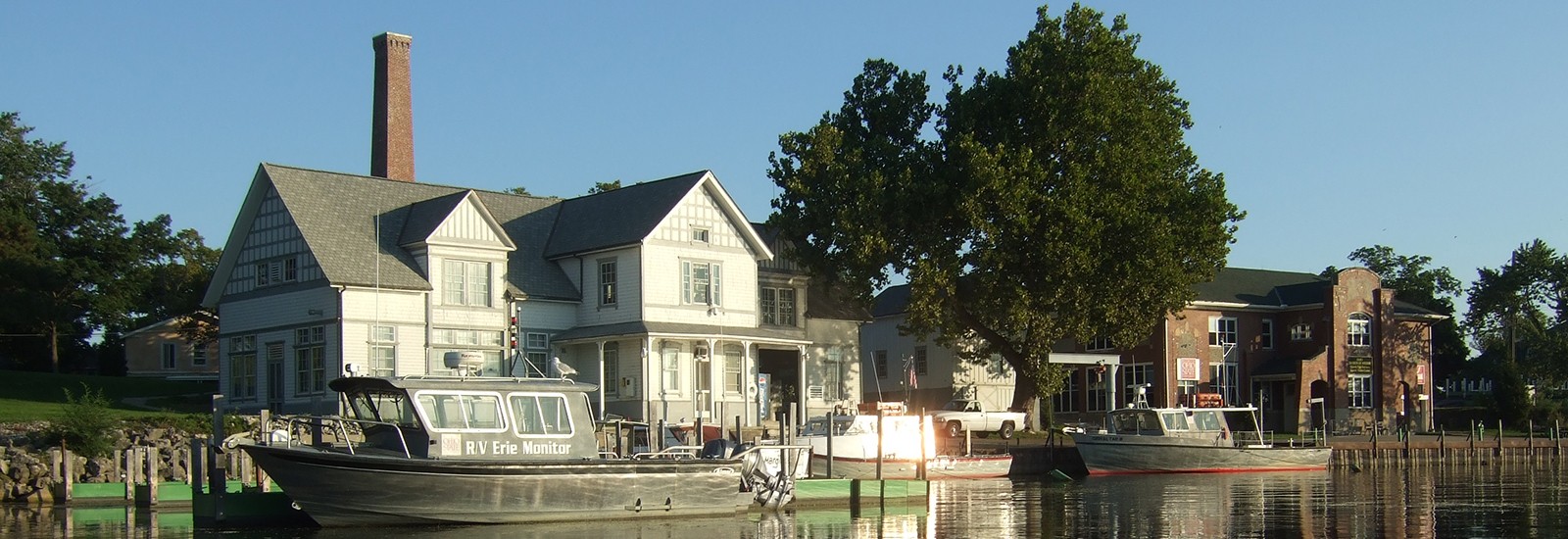Stone Lab, Ohio Sea Grant’s research and education facility on Lake Erie, has been a home for researchers studying the lake for over a century. Over the years, upgrades and renovations have made sure that the lab keeps up with modern science needs, but of course there’s always more that could be done to make sure Stone Lab continues to be a resource for everyone studying Lake Erie.
A recent bill from the Ohio Legislature will help the lab do just that. Senate Bill 299, the Clean Lake 2020 Plan, was sponsored by state Sens. Randy Gardner and Sean O’Brien, and allocates up to $36 million in funding to water quality programs that help protect Lake Erie. Ohio Sea Grant and Stone Lab received $2.65 million of that funding, which will cover a new building and equipment for the Lake Erie laboratory's Research Building (pictured above), as well as monitoring equipment that will be placed in the Maumee River this spring.
Clean Lake 2020’s goal is to offer potential solutions to the lake’s harmful algal bloom (HABs) problem and related issues. The blooms can produce toxins that lead to drinking water advisories, and an overgrowth of algae can lead to unsightly scums near the shore that can negatively affect tourism in the area.
“Stone Lab and the Sea Grant program are critical to our work toward a cleaner Lake Erie,” says Gardner. “That’s why, when I wrote the Clean Lake 2020 plan with Rep. Steve Arndt, one of our priorities was upgrading lab facilities and funding real-time in-lake research through Stone Lab. The bottom line is that Stone Lab and Sea Grant are as important as ever to our efforts to make real progress to improve the health of Lake Erie.”
The new building will be located on South Bass Island’s Peach Point, just north of downtown Put-in-Bay. About 2,000 square feet of space will be split between a lab expansion that adds space for research and teaching and a set of outdoor flow-through tanks — also called mesocosms — that was specifically requested by Ohio researchers. The mesocosms enable researchers to study the natural environmental of the lake under controlled conditions.
“When we reached out to the people who use our facility to ask them what they wanted the new space to look like, everybody came back saying they wanted these mesocosms,” said Chris Winslow, Ohio Sea Grant and Stone Lab’s director. “So this could be from twelve to twenty tanks that hold hundreds of gallons of water, and we’d be able to pump water from Lake Erie into these tanks and do real-time experiments in actual lake water.”
Construction on the expansion and mesocosms will likely begin in 2020.
